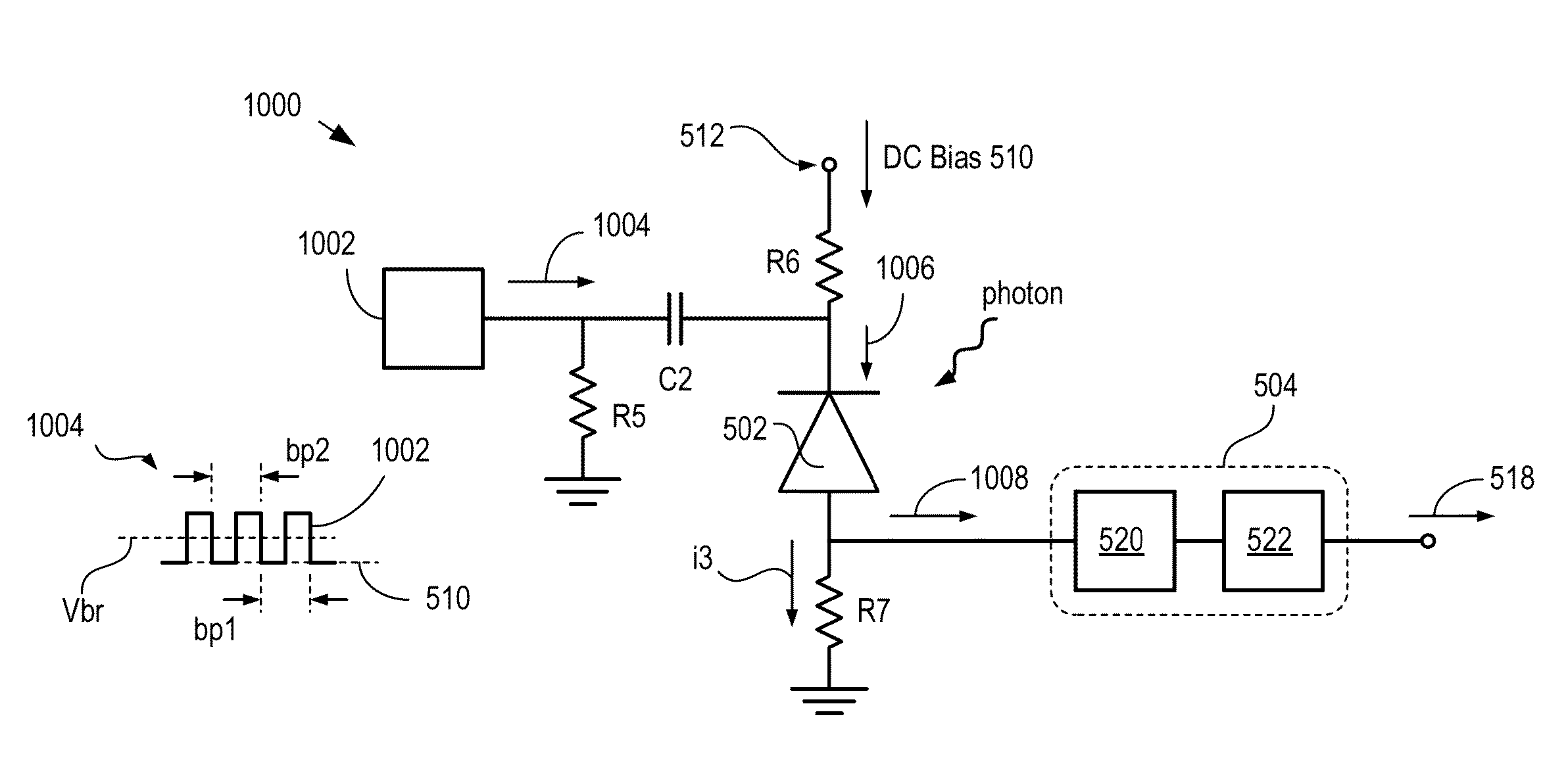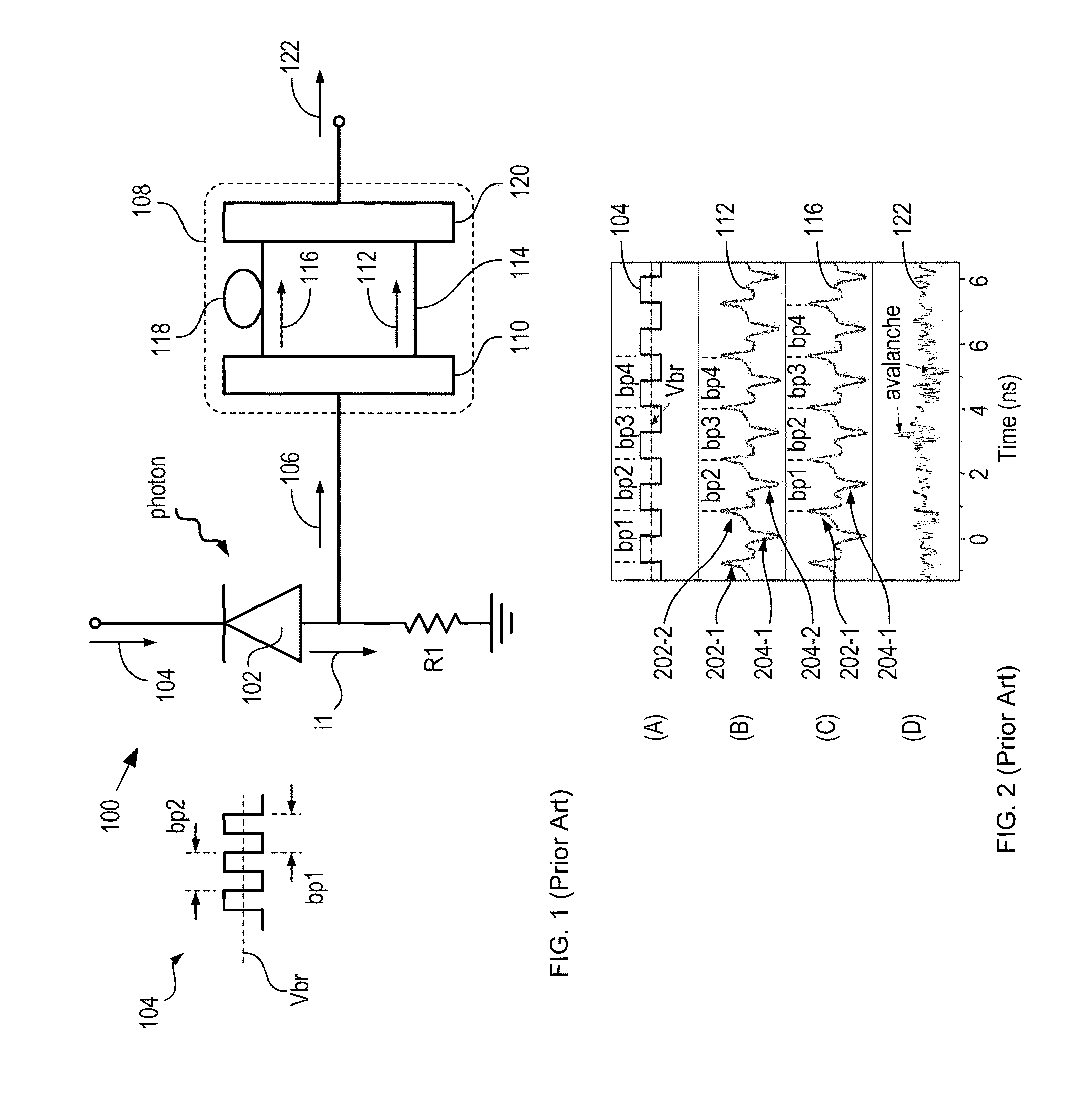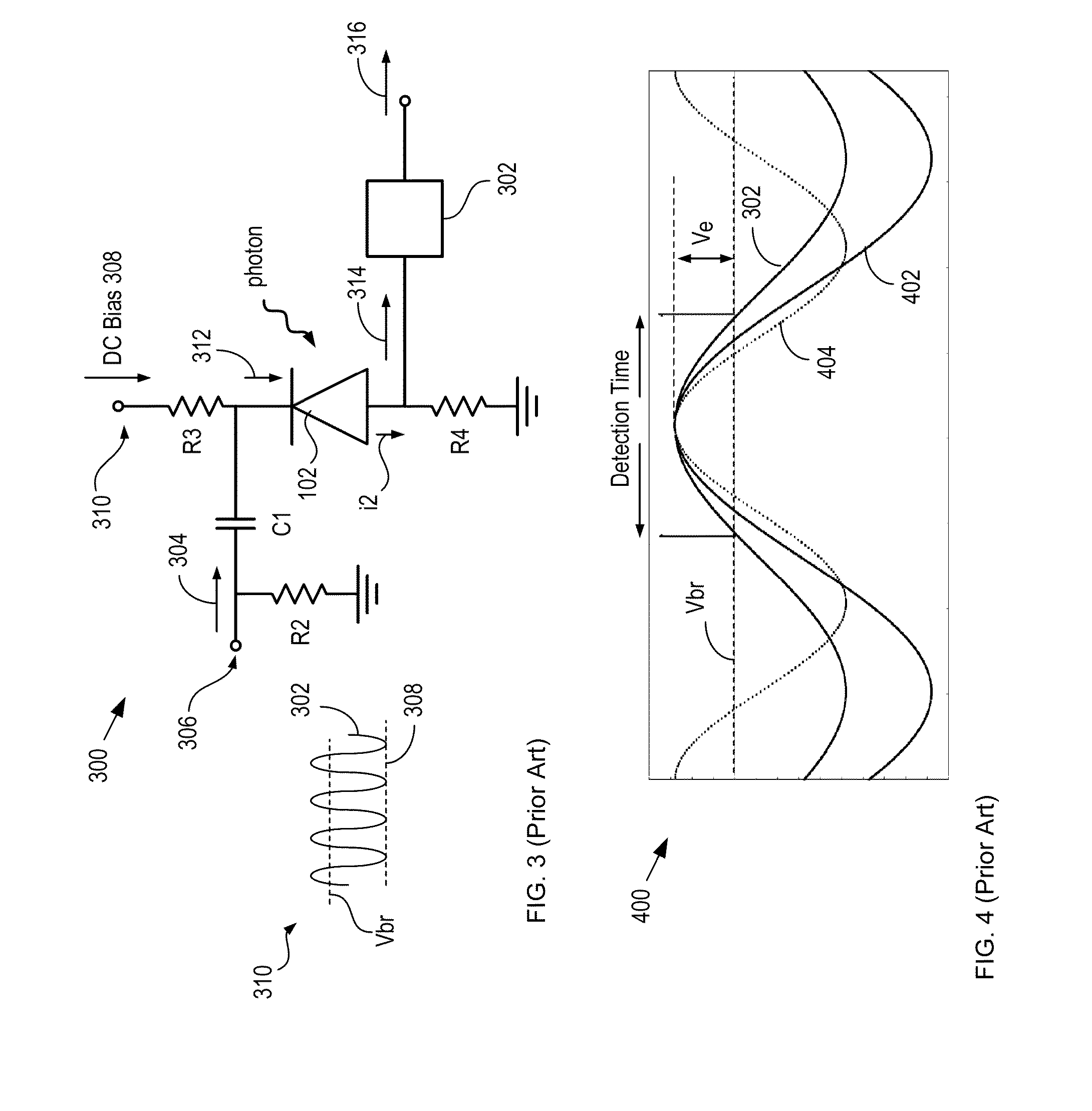High-Repetition-Rate Single-Photon Receiver and Method Therefor
- Summary
- Abstract
- Description
- Claims
- Application Information
AI Technical Summary
Benefits of technology
Problems solved by technology
Method used
Image
Examples
Embodiment Construction
[0042]The following terms are defined for use in this Specification, including the appended claims:[0043]A single-photon avalanche diode is defined as an avalanche photodiode that is dimensioned and arranged to enable the generation of a detectable macroscopic current signal upon receipt of a single photon when biased with a bias voltage that exceeds its breakdown voltage. A single-photon avalanche diode has a layer structure and explicit device design features that enable it to exhibit lower dark counts and less afterpulsing than a conventional avalanche photodiode.[0044]A gating signal is defined as a periodic signal applied to a SPAD to temporarily bring the magnitude of its reverse bias voltage above the magnitude of its breakdown voltage. As a result, a gating signal alternately arms and quenches the SPAD at a rate that depends on the frequency of the gating signal.
[0045]FIG. 1 depicts a schematic drawing of a single-photon receiver comprising a self-differencing circuit for ca...
PUM
 Login to View More
Login to View More Abstract
Description
Claims
Application Information
 Login to View More
Login to View More - R&D
- Intellectual Property
- Life Sciences
- Materials
- Tech Scout
- Unparalleled Data Quality
- Higher Quality Content
- 60% Fewer Hallucinations
Browse by: Latest US Patents, China's latest patents, Technical Efficacy Thesaurus, Application Domain, Technology Topic, Popular Technical Reports.
© 2025 PatSnap. All rights reserved.Legal|Privacy policy|Modern Slavery Act Transparency Statement|Sitemap|About US| Contact US: help@patsnap.com



